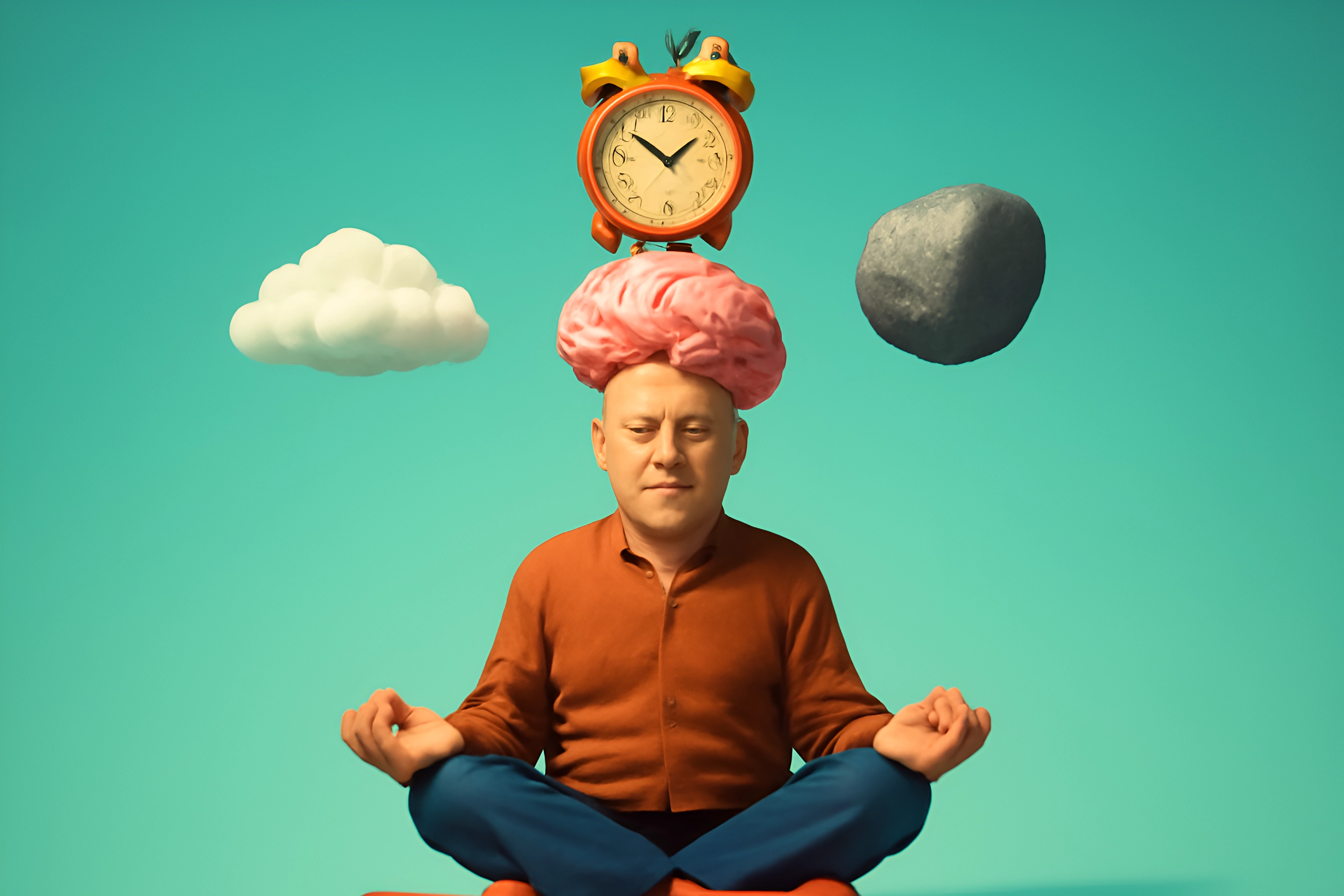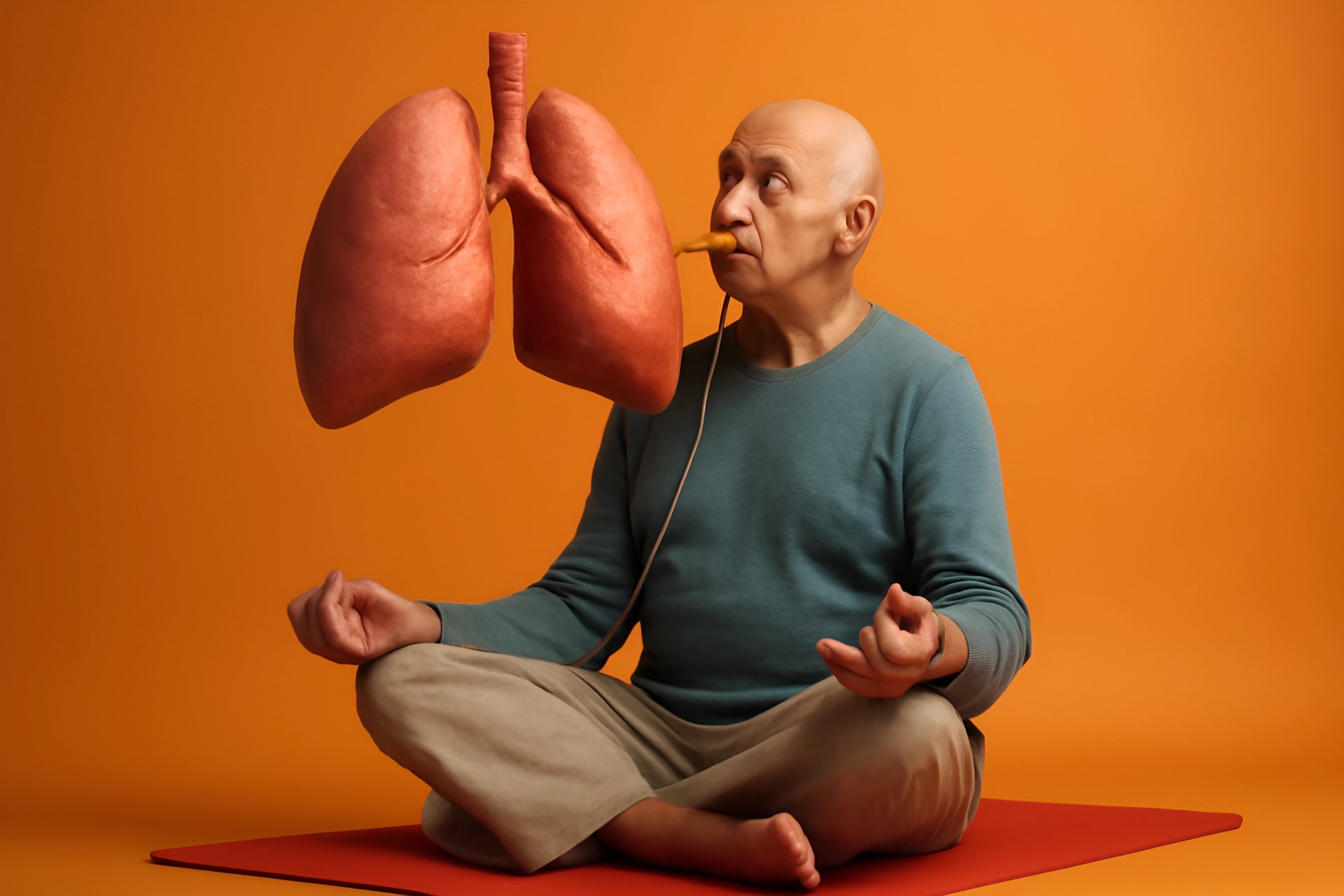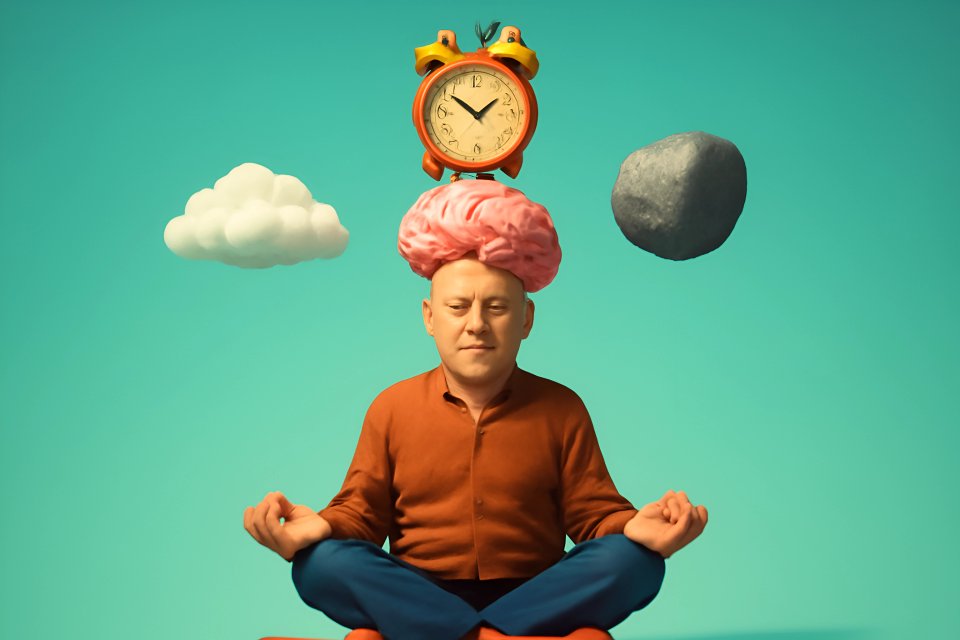
Does the world feel like it’s spinning faster than ever? You’ve navigated careers, raised families, and built a life, yet this new chapter brings its own unique brand of stress. Whether it’s managing new health concerns, planning for retirement, or simply feeling the weight of a constantly connected world, the pressure can feel relentless, stealing your peace and your vitality.
But what if you could reclaim your calm, not with a complicated system or a demanding new regimen, but with a tool you already possess? Mindfulness and meditation are not mystical arts reserved for monks on mountaintops. They are practical, science-backed skills for building a fortress of tranquility within yourself, giving you the power to face life’s challenges with grace and strength.
In this post, we'll guide you through simple, accessible mindfulness meditation techniques for stress relief over 50. You'll learn how to start a practice that fits your lifestyle, without needing to sit on the floor for hours or silence your mind completely. This is your path to a more centered, vibrant you.
Why Mindfulness is a Game-Changer for Health and Happiness After 50
Before we dive into the "how," let's understand the "why." Why is this practice so profoundly effective, especially during this stage of life? The answer lies in how it directly addresses the unique pressures you face and delivers tangible, life-enhancing rewards.
Addressing the Unique Stressors of Midlife and Beyond
Life after 50 can feel like a balancing act on a high wire. You might be navigating the financial and identity shifts of retirement, coping with an empty nest, or taking on new caregiving roles for parents or grandchildren. According to the National Institute of Mental Health, older adults face unique challenges including grief and changing social roles that can significantly impact well-being.
These aren't just mental hurdles; they trigger a real physiological response. Sustained stress keeps your cortisol levels high, which can worsen age-related health risks. Mindfulness interrupts this damaging cycle by teaching you to observe your thoughts and feelings without getting swept away by them, transforming a potential crisis into a manageable moment.
This isn't just a nice idea—it's proven. Studies show that older adults who practice mindfulness regularly report feeling less stressed and more in control. They learn to anchor themselves in the present moment instead of getting lost in worries about the future, a skill that is essential for navigating this chapter with confidence.
The Science-Backed Benefits for Your Well-being
The rewards of meditation go far beyond a feeling of calm; they create measurable changes in your body and brain. Are you concerned about blood pressure? Research presented by the American Heart Association shows that mindfulness can significantly lower blood pressure and improve cardiovascular health, a key benefit for this demographic.
Struggling with sleep or worried about staying sharp? Neuroimaging studies have found that just eight weeks of meditation can increase gray matter in the parts of the brain responsible for memory and emotional regulation. This means mindfulness can literally change your brain for the better, enhancing your focus and protecting cognitive function.
Furthermore, for those dealing with the daily reality of chronic discomfort, mindfulness offers a powerful, non-pharmaceutical tool. It works by shifting your brain's activity away from pain-processing centers, helping you take a mental break from pain and improve your quality of life. These are not just features of a practice; they are profound benefits that directly contribute to your health, security, and happiness.
Getting Started: 5 Simple Mindfulness Practices for Seniors (No Pretzels Required!)
Ready to begin? The beauty of mindfulness is its simplicity and adaptability. These five practices are designed to be done anywhere, anytime, and require no special equipment—just a willingness to be present.
Technique 1: The 3-Minute Mindful Breath
This is the cornerstone of mindfulness and your instant access to calm. Find a comfortable position sitting in a chair, with your feet flat on the floor and your hands resting gently in your lap. You can close your eyes or simply lower your gaze.
Simply begin to notice your breath. Feel the sensation of the air entering your nostrils and the gentle rise and fall of your chest or abdomen. You don't need to change your breathing; just observe it as it is.
When your mind wanders—and it will—gently acknowledge the thought without judgment and guide your attention back to the physical sensation of breathing. Even three minutes of this practice can have a powerful effect, creating a pocket of peace in a busy day.
Technique 2: The Chair-Based Body Scan
This practice is perfect for releasing hidden tension and reconnecting with your body, all from the comfort of a chair. Sit with your back supported and close your eyes. Bring your awareness to the soles of your feet, noticing any sensations like warmth, tingling, or the pressure against your shoes.
Slowly, guide your attention up through your body: your ankles, calves, knees, and thighs. Notice the weight of your body resting on the chair. Continue your scan up through your torso, arms, neck, and finally, the top of your head.
If you find an area of tightness or discomfort, don't try to force it to relax. Instead, simply breathe into that area, imagining each exhale carrying away a little bit of the tension. This practice is one of the most effective mindfulness exercises for cultivating awareness and is especially helpful before bed to promote restful sleep.
Technique 3: Mindful Walking
You don't have to be sitting still to be mindful. You can integrate this practice into a daily walk around the block or even just walking from one room to another. The key is to shift your focus from your destination to the journey itself.
Start by standing still for a moment, feeling the solid ground beneath your feet. As you begin to walk, pay attention to the physical sensations. Notice the rhythm of your steps, the feeling of your heel connecting with the ground, followed by the ball of your foot, and then your toes.
Expand your awareness to the sights and sounds around you without labeling them. Notice the color of the leaves, the feeling of the breeze on your skin, the sound of birds. This practice anchors you firmly in the present, providing a powerful antidote to anxious, looping thoughts.
Technique 4: The Mindful Sip
You can transform a routine daily activity, like drinking your morning coffee or tea, into a profound moment of presence. This simple act builds "micro-moments" of mindfulness that can rewire your response to stress throughout the day.
Before you take the first sip, pause. Hold the mug in your hands and notice its warmth and weight. Bring it closer and inhale the aroma, letting it fill your senses.
When you finally drink, do so slowly. Notice the temperature and taste as the liquid crosses your lips and fills your mouth. This small ritual of paying full attention turns an automatic habit into a grounding, sensory experience.
Technique 5: Loving-Kindness Meditation
Stress and worry can often make us feel isolated. This practice directly counters that by cultivating feelings of warmth, connection, and compassion for yourself and for others. It's a powerful way to boost your emotional well-being.
Sitting comfortably, silently repeat a few simple, positive phrases directed toward yourself. A common set of phrases is: May I be safe. May I be healthy. May I live with ease. Feel the intention behind the words.
Then, bring to mind someone you care about deeply and extend these same wishes to them. You can gradually expand this circle of compassion to include neutral people and, eventually, even those with whom you have difficulty. This practice activates brain regions associated with empathy and can significantly reduce feelings of loneliness.
Making It a Habit: Practical Tips for Senior Stress Management
Knowing the techniques is one thing; integrating them into your life is another. The key to unlocking the long-term benefits of mindfulness is consistency. Here’s how to make it a sustainable part of your routine for effective senior stress management.
Start Small, Stay Consistent
The biggest mistake beginners make is trying to do too much, too soon. Don't aim for a 30-minute session on day one. Instead, commit to just five minutes a day. Consistency is far more important than duration.
Choose a time that works for you and stick with it. Maybe it's first thing in the morning before the day gets busy, or perhaps it's a way to decompress in the evening. Research shows that those who start with these "micro-sessions" are far more likely to build a lasting habit.
Track your progress in a simple journal. Note how you feel before and after your practice. Seeing these subtle shifts—less irritability, a moment of clarity, a better night's sleep—will provide the motivation to keep going.
"Habit Stack" Your Practice
One of the most effective ways to build a new habit is to link it to an existing one. This is called "habit stacking." You leverage the momentum of a behavior you already do automatically to launch your new mindfulness practice.
The formula is simple: After [CURRENT HABIT], I will [NEW MINDFULNESS PRACTICE]. For example: "After I finish my morning coffee, I will do a 3-minute mindful breath." Or, "After I brush my teeth at night, I will do a 2-minute body scan."
This strategy removes the need to rely on willpower or memory. Your existing routine becomes the trigger for your new one, making it feel natural and effortless over time. It's a simple but powerful way to ensure your practice doesn't fall through the cracks.
Overcoming Common Hurdles
It's completely normal to face a few challenges when you start. "My mind is too busy!" is the most common one. Remember, the goal is not to have an empty mind, but to notice when it has wandered and gently guide it back. Each time you do, you are strengthening your "attention muscle."
What if you feel restless or fidgety? That's okay, too. Try a mindful walking practice instead of a seated one. Or, start with just one minute and gradually add 30 seconds each day.
If you simply forget, use technology to your advantage. Set a daily reminder on your phone with a gentle prompt like "Time for your moment of calm." Placing a small cushion on your favorite chair can also serve as a powerful visual cue to practice.
Helpful Tools and Resources to Support Your Journey
As you begin your mindfulness journey, you don't have to go it alone. There are many excellent resources designed to guide and support you, making the practice even more accessible and enjoyable.
For those who enjoy using their smartphone or tablet, apps like Calm and Insight Timer offer vast libraries of guided meditations, including sessions specifically for beginners, stress relief, and sleep. For free, high-quality audio guides, the UCLA Mindful Awareness Research Center offers excellent practices like the body scan that are perfect for getting started.
To complement your mental practice with physical wellness, consider exploring gentle movement. Our guide to Mastering Sustainable Low-Impact Workouts for Seniors is the perfect companion piece, as movement is another powerful tool for managing stress. And since quality sleep is so crucial, you can apply these principles directly to your evening with our guide to Mindful Habits for Better Sleep.
Conclusion: Your Path to a Calmer, More Centered You
Mindfulness is more than just a relaxation technique; it is a profound act of self-care and an investment in your future. It transforms the challenges of aging into opportunities for growth, proving that tranquility isn’t a fleeting luxury but a skill you can build and rely on, day after day. By dedicating just a few minutes to being present, you cultivate an inner sanctuary that is always accessible.
The cumulative benefits—sharper focus, more stable emotions, and a renewed joy in the small moments of life—reveal that true vitality after 50 springs from this inner equilibrium. You have the power to change your relationship with stress. You deserve the peace and clarity that this practice brings.
What's one small mindful moment you can create for yourself this week? Share your ideas or questions in the comments below—we’d love to hear from you.
















